IYKYK: An Interview with Chris Kraus and Hedi El Kholti, Editors of SEMIOTEXT(E)
|Wes Del Val

An upshot of our year of loungewear and time spent at home played out – at least anecdotally – in the publishing industry, as book sales increased and (we imagine) off-screen reading did, too. Recent Semiotext(e) publications made more than a few “Best of 2020” lists – including the staff critics’ picks at The New York Times – despite the ostensible competition in vying for the attention of ideas-hungry WFH readers. The independent, Los Angeles-based outfit has more in store for 2021.
“As non-academic American publishers, you practically own ‘French Theory.’ What are your thoughts on its current state and reception with English-language readers?”
Hedi El Kholti and Chris Kraus answered every one of my questions except that one. I was honestly curious about their thoughts on FT today, but my guess is that they and Semiotext(e), the publisher for which they are both co-editors, have moved so far beyond the critical tradition the house was largely built upon, close to five decades ago, that they don’t know – or simply no longer care about – the answer. That’s fine with me.
I still think most people who casually know Semiotexte – both Kraus and El Kholti eschewed the brand’s signature parentheses in our correspondence, so I will from now on as well – instinctively associate them with the intellectual circle dominated by names such as Michel Foucault, Jacques Derrida, Jean-François Lyotard, Jean Baudrillard, Gilles Deleuze, and Félix Guattari. (Semiotexte published English translations of all of them, except Derrida.) If Semiotexte has indeed proceeded much wider than French Theory, they’ve kept the “French” as part of many titles, which include important translations of works by Catherine Breillat, Guy Debord, Julia Kristeva, Henri Lefebvre, and others. But lest you think it’s all Francophilia over there, the publishers have kept their distinct editorial antennae alert for singular and new voices on the Anglo side of the Atlantic, leading them to Kathy Acker, Bruce Benderson, Gary Indiana, Eileen Myles, Natasha Stagg, Lynne Tillman, David Wojnarowicz, all of whom are or are about to be, in their catalog.
Admittedly, I’ve been most interested in what Semiotexte has been doing the past five years or so – and I think they have never been more impressive. I eagerly await the announcement of each new release, though you may not find out about them through publishing’s traditional promotional means. As the kids say today on social media, where Semiotexte is largely absent, but whose users their new books are getting to: “IYKYK.”

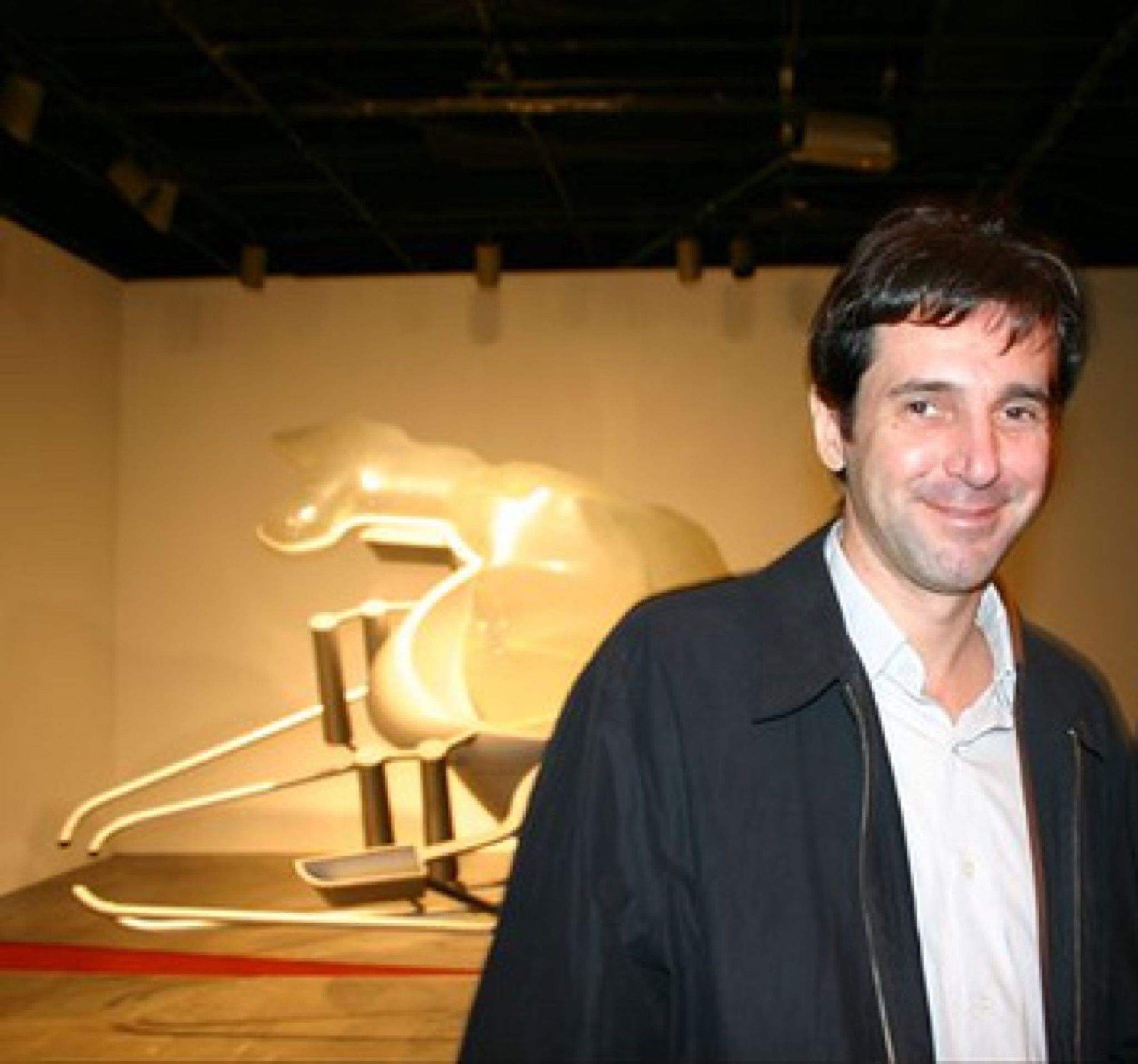
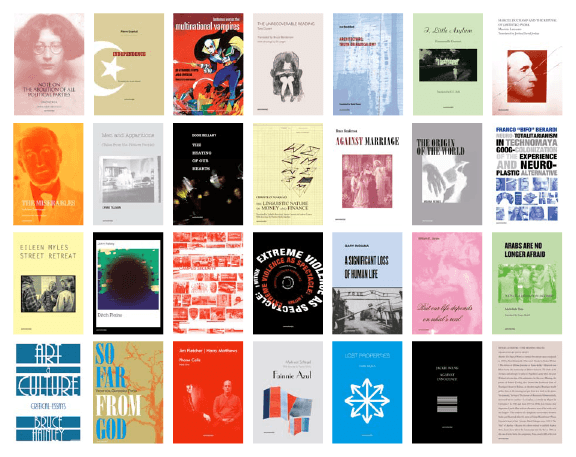
Wes Del Val: I’m so impressed you’re not on Instagram, let several days pass between posts on Twitter and then only retweet, and that the fourth entry on your homepage is titled “28 New publications for the 2014 Whitney Biennial.” Don’t tell me you actually care first and foremost about the quality of the content in your books and not on how you can get people with big followings to post about them!
Hedi El Kholti: Yes, the site is a bit abandoned right now. We’re planning to relaunch it at some point with a new design, but we keep postponing that project. I’m not sure if being present on social media actually does very much for the press. Facebook was useful in the beginning in terms of letting people know about events and new titles, but as soon as you had to sponsor posts to reach your followers, it became useless as a tool for communication. I find Instagram hard to follow, and anxiety-provoking. I can’t seem to spend more than a few minutes there. And Twitter is a toxic stew. I mean, the take-downs are funny sometimes, but often it feels like people practicing their material for a comedy gig that will never materialize in real life. “Have you or a loved one been diagnosed with Semiotext (e)?” or “Save your spleen for the real enemy, semiotext(e).” It’s weird to have your editorial work turned into a joke and even weirder for it to become something aspirational: “at the beginning of quar I downloaded a bunch of Semiotext(e) books but all I’ve done is watch 90 day fiancé.” I guess that’s what happens when the press enters the culture to the degree it has in recent years. It breeds a kind of resentment that’s completely divorced from the material reality in which we operate. For a decade we had a small office in MacArthur Park in LA that no one ever went to after the first year and that was progressively turned into a storage space. Since then we’ve operated in a small office in my home. Some of the boxes of books are stored in my garage. We barely break even and don’t have the time or resources to chase grants, which isn’t all that interesting to me either. Actually, I’m more gratified or moved when a book that’s a few years old finds an audience, after the hype of the release.
Chris Kraus: Promoting each season’s titles became something we dreaded. It’s heartbreaking when nothing much happens for a book you really believe in. You want to do your best for the people and work you believe in, but promoting the books is so time consuming, and it has to happen at the same time we’re preparing the next season or two. We experimented with hiring various contract publicists but recently we were very lucky when our friend, the writer and critic Janique Vigier, offered to take charge of publicity for Semiotexte. Janique is based in New York, she understands the list completely, and she’s in dialogue with people who’ve been very helpful with a lot of the books. For decades, a full-length New York Times review has eluded us, but this summer the Times ran a featured review of Hervé Guibert’s To The Friend Who Did Not Save My Life.
“A mainstream publisher wanted to acquire [I Love Dick] before the Amazon show streamed. That would have been awful. A supermarket edition with Kevin Bacon on the cover, destined to be remaindered.”
Two I Love Dick questions as that has to be your most successful book, no?
1. Did Amazon Video adapting it in 2016 do anything for the overall visibility of the publisher? My guess is it only increased sales of the book and perhaps one or two others by Chris, but I’d be very pleased if you told me otherwise.
CK: No, unfortunately you’re right. People mostly buy the book off of Amazon and they don’t even see the name of the publisher.
2. Whose shrewd idea was it to redesign the cover? It looks like no other Semiotexte book. Were you, dare I say, trying to appeal to a new, younger generation, one who lives on Instagram? No image along with the color combination made it catnip for aspirational posters there.
CK: That was the UK edition – from Colm Toibin and Peter Strauss’ Tuskar Rock imprint, under the auspices of Serpent’s Tail/Profile Books. And then a lot of the other foreign editions copied it. I’m glad we kept the Semiotexte edition as it was since Hedi redesigned it in 2006. A mainstream publisher wanted to acquire the book before the Amazon show streamed. That would have been awful. A supermarket edition with Kevin Bacon on the cover, destined to be remaindered. Our list is highly curated, the titles resonate against each other, and I’m glad the original Semiotexte edition exists with the original cover.
Thank god you avoided the dreaded movie tie-in version. Your list has always contained a very heady mix of books by an international array of artists, philosophers, social and art critics, academics, and fiction writers. I’m very interested in knowing about your vetting process. How do you find your new titles and writers today compared to, say, before the Internet was so widespread?
CK: Weirdly it hasn’t changed much at all. It’s not so much a vetting process as attractions, connections, affinities. Most often books come to us through people we already know or who are known to us through mutual friends. Occasionally, we’ve reached out to people whose work impresses us, inviting them to do a project.
HK: One of the missions of Semiotexte, since its inception, has been to publish French authors in the US, and put them in a kind of dialogue with our American writers. So we’ve published Marie Darrieussecq, Mathieu Lindon, Abdellah Taïa, Michel Leiris, and Hervé Guibert in recent years.
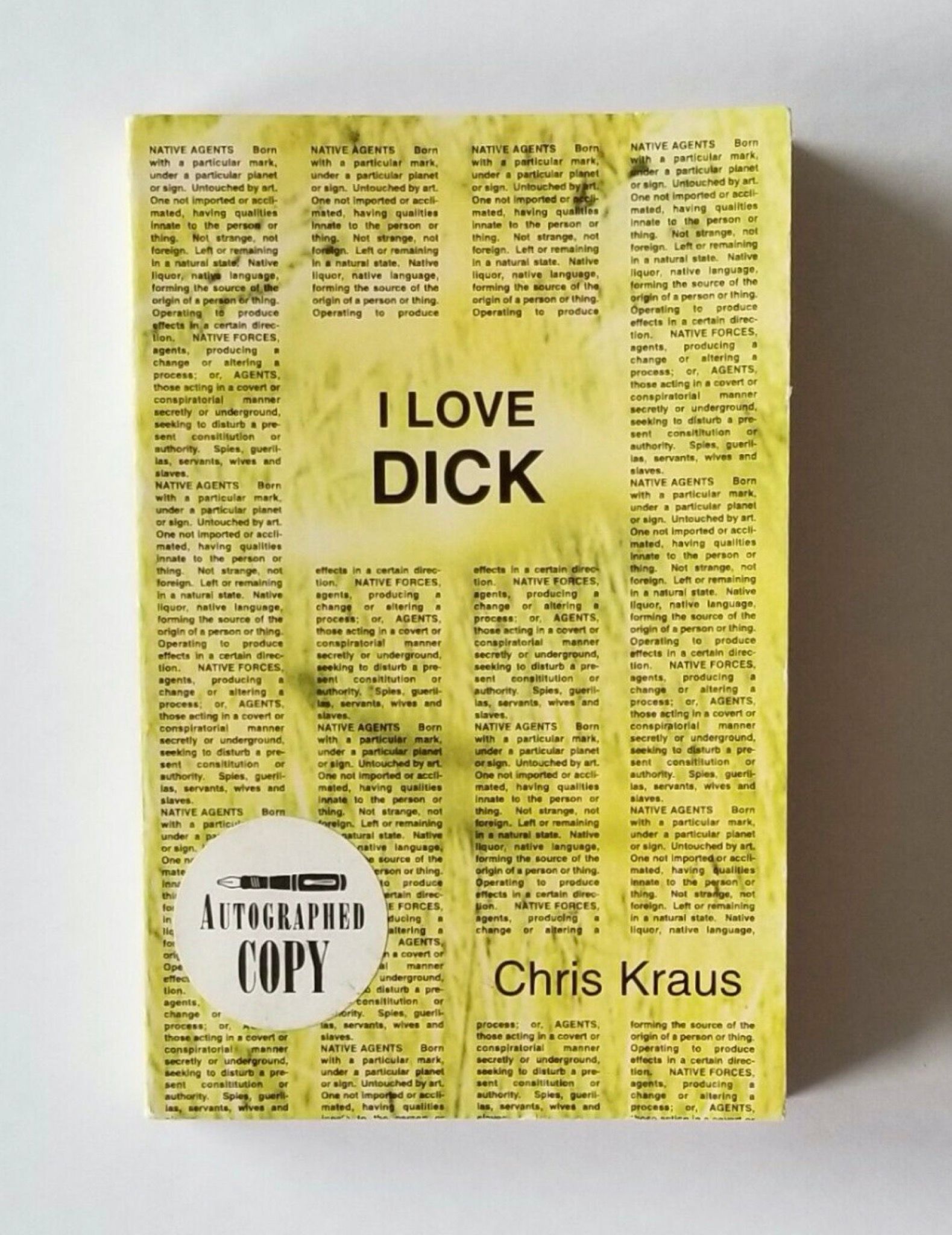
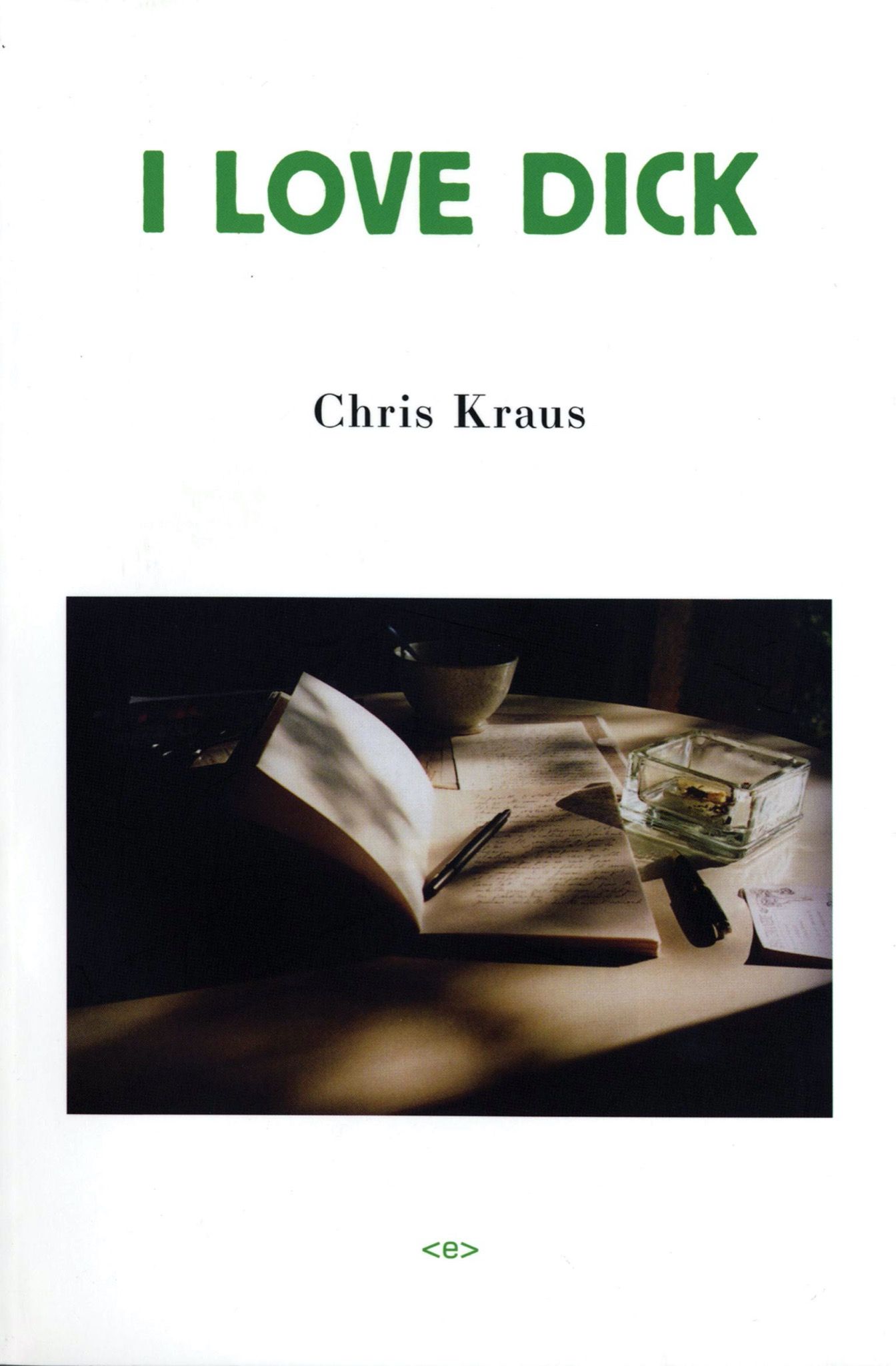
Which dialogues have been the most rewarding for you to be a part of, knowing they couldn’t have happened if you hadn’t taken all the necessary time with each translator – a crucial job in publishing which doesn’t get nearly the public recognition it deserves! – to deliver careful, impactful translations?
HK: I don’t know, I can’t really recall specific examples. It’s more a diffuse feeling, something intangible. Reading Wayne Koestenbaum, who we’re publishing next year, converse so beautifully with Sasha Frere-Jones about Michel Leiris’ The Ribbon at Olympia’s Throat in Bookforum makes me really happy. Or the way Gary Indiana engaged with Pierre Guyotat’s Coma and wrote a very incisive preface. Kevin Killian’s great Amazon review of Abdellah Taia’s Salvation Army also comes to mind. Kate Zambreno in conversation with Marie Darrieussecq in the Paris Review, when Being Here Is Everything came out, was really meaningful to me. The similarities with Kate’s book Heroines, and with her work in general, are so obvious to me that I’m delighted they got to meet. Bruce Hainley’s and Wayne Koestenbaum’s poignant and funny reckoning of Alain Guiraudie’s Now the Night Begins was also a highlight.
I know there are publicly the three of you listed as co-editors, but how do you handle editing in-house? Do you use freelancers? Are the manuscripts mostly taken as is and/or how much line editing and back-and-forth with the author does a typical book get?
CK: Most of the books arrive fully formed, needing only routine copy editing and proofreading. We have a handful of people we call on over and over again for that work. But sometimes there’s a longer development process, and usually whoever acquires the book works with the writer. Hedi worked alongside Lauren Mackler on the design and photo-editing of Reynaldo Rivera’s book, and I helped with the commissioning and editing of additional texts by Vaginal Davis, Luis Bauz, and Reynaldo. Our friend Robert Dewhurst edited the new edition of David Rattray’s Invisible, and he did a lot of editorial work on Robert Glucks’s anthology. I worked pretty closely with Stephanie LaCava on her new novel The Superrationals.
Do you have a certain number of titles you try and release each year to make the numbers work financially? Due to the intellectual nature of the kinds of books you publish and the size of the operation is there some that end up taking years to finish?
CK: Somehow it usually ends up being around six titles a season and that number often includes one or two reprints. It’s not about a financial call so much as is it about realizing the limits of our resources. Hedi is the only person who works full time for Semiotexte. The rest of us assist him in various capacities. We’ve talked about what it would mean to try and expand – to add another full-time person and other assistants – but it seems better to keep doing what we do, on the scale on which we do it. Some projects take years to finish, that’s true. And they aren’t necessarily the ones that will become the biggest sellers. The investment is always more intellectual and psychic than it is financial.
HEK: I think we acquired the first volume of Serge Daney’s collected works, The Cinema House and the World, in 2013. It went through a few translators, who started the project but felt overwhelmed by the scope and commitment and gave up. It’s finally coming out next year, or in early 2022.
Since this is such an unusual year and everything is topsy turvy, are there any front or backlist titles you’re surprised have had an unexpected flourish as a result?
HEK: In May, we rereleased Hervé Guibert’s dark AIDS novel To the Friend Who Did Not Save My Life alongside a selection of his short stories, Written in Invisible Ink, edited and translated by Jeffrey Zuckerman. It was a few months after the shelter in place order, and the work seems to have resonated with the present moment. Jackie Wang’s Carceral Capitalism, which examines contemporary incarceration techniques, predatory policing, the political economy of fees and fines, and algorithmic policing, circulated widely at the beginning of the Black Lives Matter protests. More surprising was how many people bought the 2800-page Spheres trilogy by Peter Sloterdijk. I guess some people found themselves with a lot of time on their hands and decided to engage with these very large books that they were maybe contemplating reading at some point, but didn’t have the time or energy for – like Proust’s In Search of Lost Time.
“I feel that a particular book will find me when I most need it.”
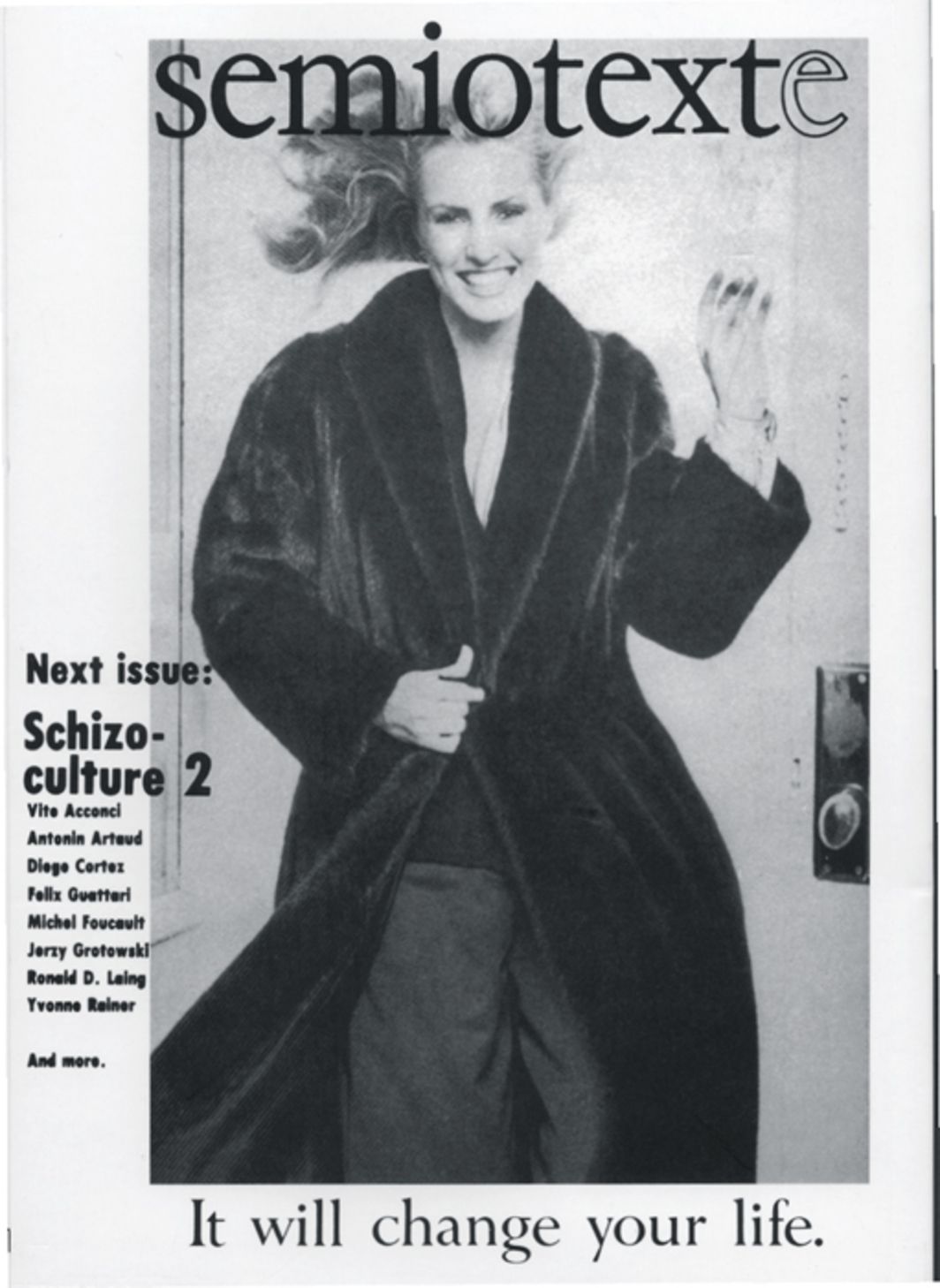

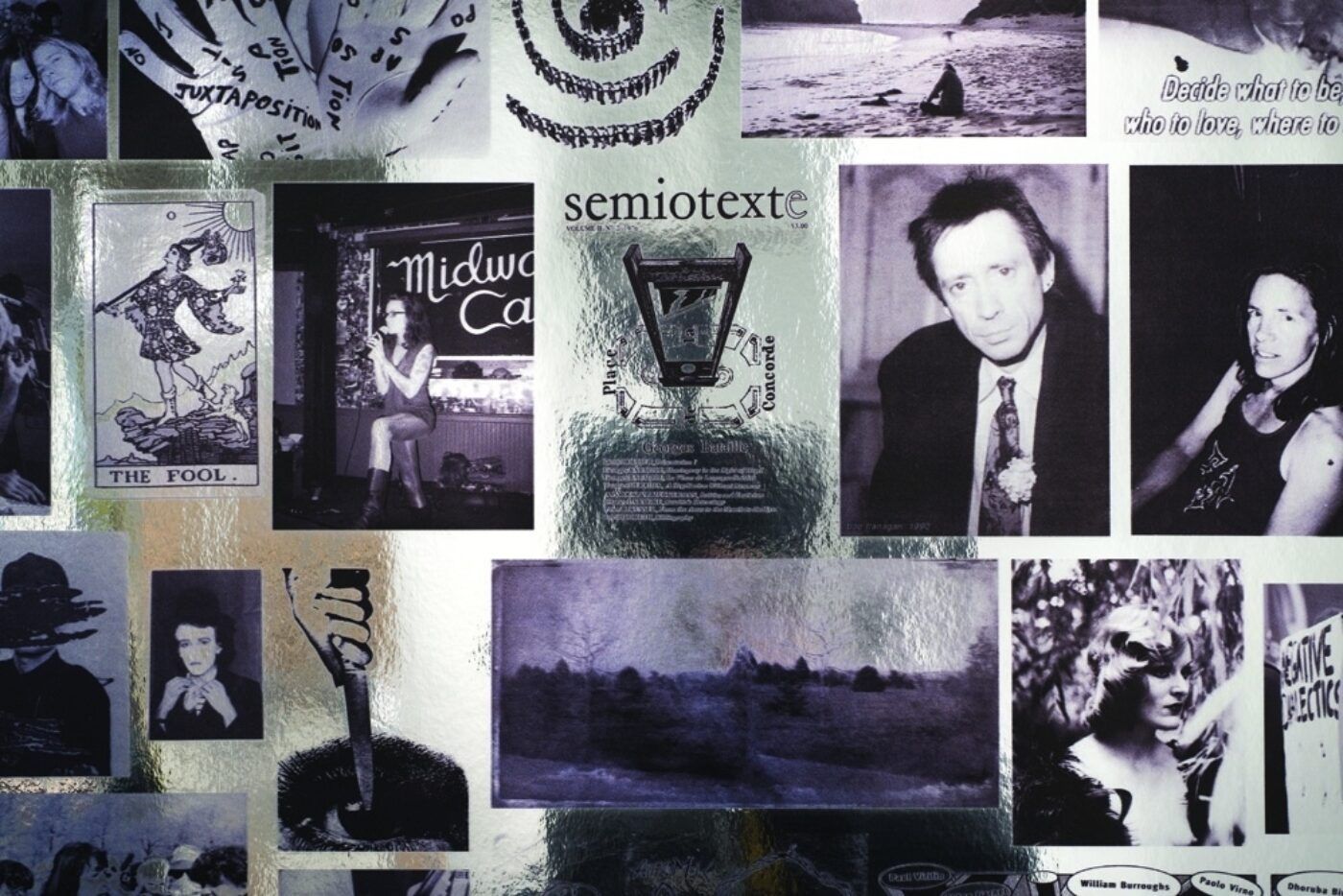
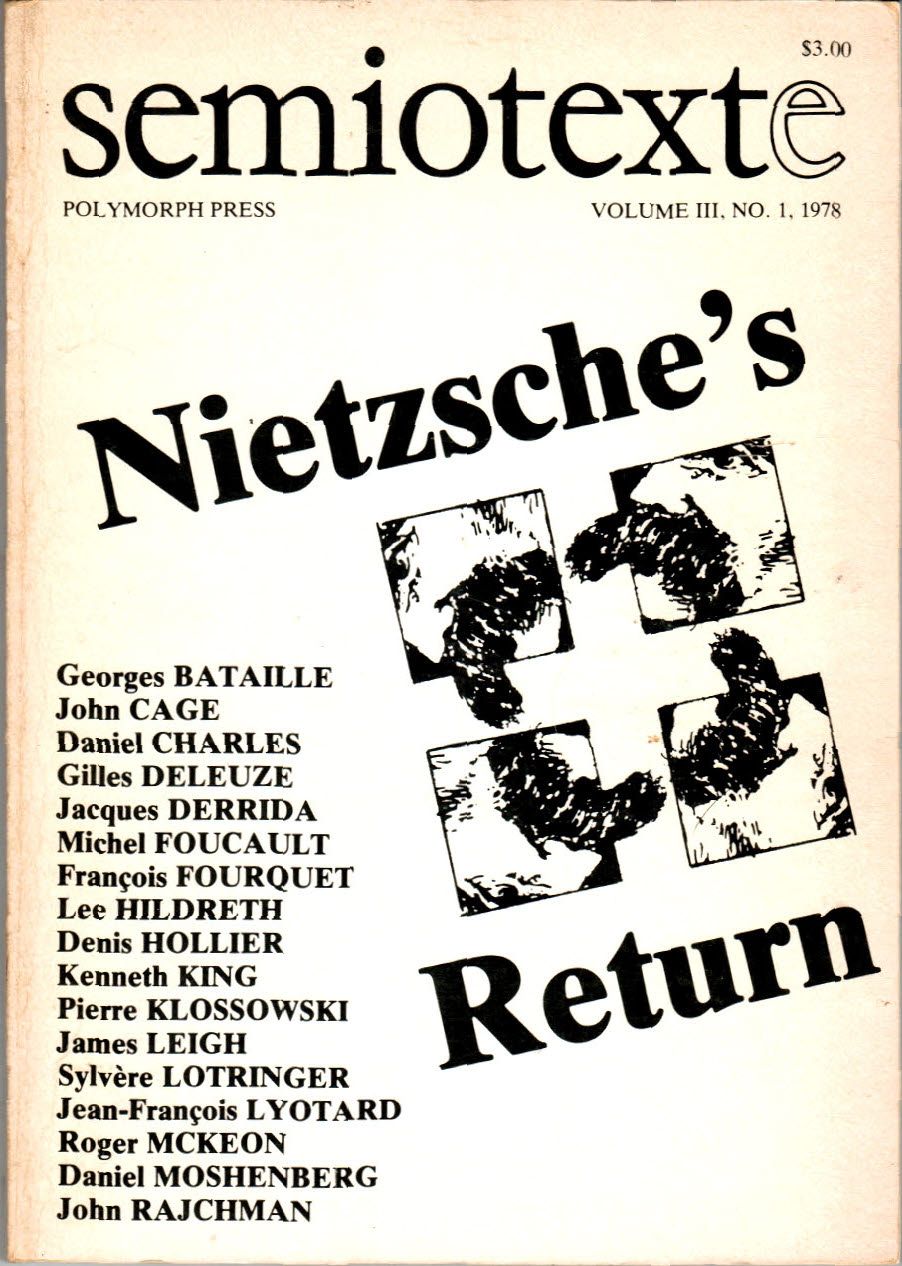
I think it’s fabulous when a massive project like the Sloterdijk trilogy makes it into English – I’d love to know its completion rate! How does a serious philosophy series like that not end up with an academic press, and would you be willing to share any post-release info about it? I think people are always fascinated when it comes to how many of that kind of book are printed and who is buying them.
I guess maybe the cost of the translation made them hesitate. I think we sold over 10,000 copies of the first volume.
You’ve really run a fantastic independent race for decades, but who else in publishing continually impresses you?
CK: Nightboat keeps on going and going. They’ve just published Andrew Durbin’s fantastic new novel, Skyland, and a new edition of Fanny Howe’s Radical Love. There’s also a new press in London called Divided Press that’s pursuing an interesting agenda of philosophy, literature, and activism.
HEK: I am continually impressed by Siglio’s output. From the first release in 2008, Joe Brainard’s The Nancy Book, to the last release I got – Bernadette Mayer’s Memory – [publisher] Lisa Pearson has created this very coherent and beautiful collection of books with all my favorite artists and poets. Memory felt so poignant, as the concept of time has become so amorphous. It was almost a directive to find something in days that were completely ghostly and bled out of their substance. I was really bummed when the Printed Matter book fair was cancelled. I always look forward to seeing what all our friends and colleagues from Sternberg, Primary Information, etc., are publishing. I guess I’m still emotionally invested in the romance of independent publishing, or in artists making books, even though everything feels so much more professionalized now.
There better be strong romance there or none of it’s happening. I think everyone from each of those publishers listed to those who exhibit at an art book fair would agree. I’m quite sure I already know what you’ll say, but I still want to ask you both: after doing this for so many years and knowing all else that is out there, what is your present attitude about people reading books, people buying books, and whether or not people are actually reading the books they buy?
CK: People still read books. Books still offer solace.
HEK: Since we’re only operating with the proceeds from the sales of our books, I am grateful that people still find what we publish relevant to them. I’m part of a book club that was started by a friend of mine, the artist Paul Gellman, at the beginning of the pandemic, and it really helped me deal with all the anxiety of 2020. I buy more books than I can read, and my partner, who’s a writer, gets a lot of galleys. So we’re submerged in books. But I don’t worry about it too much. I feel that a particular book will find me when I most need it.
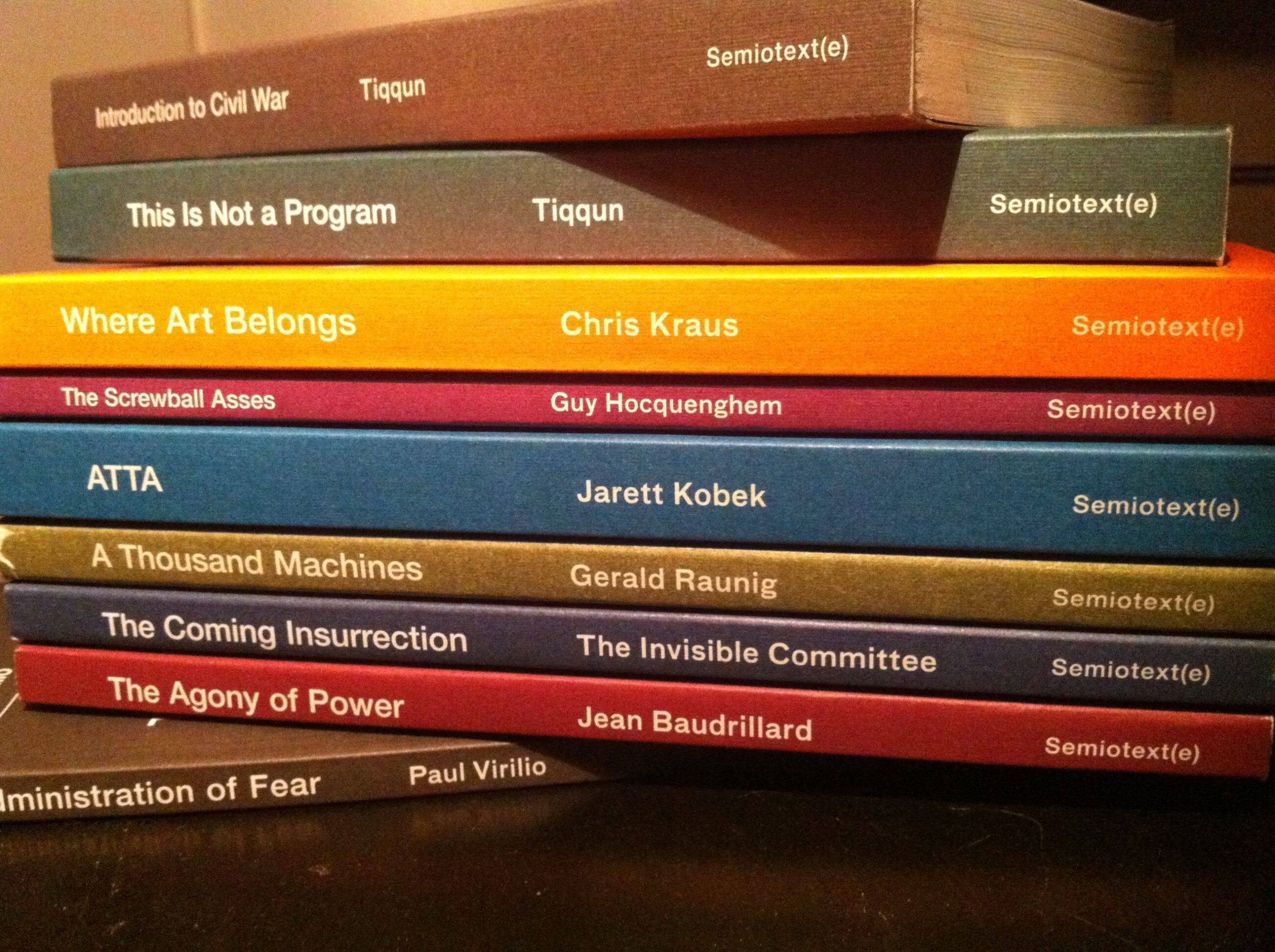
Credits
- Text: Wes Del Val


